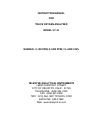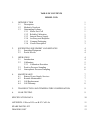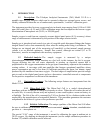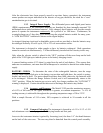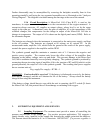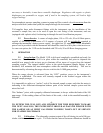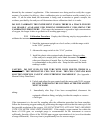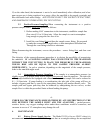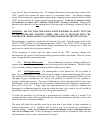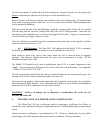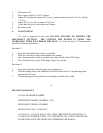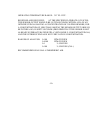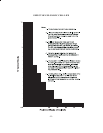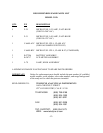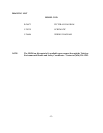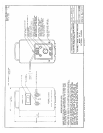
necessary or desirable, it must have a metallic diaphragm. Regulators with organic or plastic
diaphragms are permeable to oxygen, and if used in the sampling system, will lead to high
oxygen readings.
For atmospheric pressure sampling, connect a pump and flow control valve downstream
from the
analyzer and draw (rather than push) the sample through the instrument.
TAI supplies three male disconnect fittings with the instrument; one for installation of the
customer’s sample line, one to be used to open the vent fitting of the instrument, and one
(equipped with a plastic tube) for drawing air through the unit for calibration purposes.
2.2 Power Service
: A source of single-phase, 105 to 125 volt, 50 or 60 Hertz power,
capable of delivering a maximum of 1/4 ampere of current will be periodically
required to
recharge the instrument’s battery power supply. An eight-foot, UL approved, 3-wire, detachable
power cord is provided with the instrument and should be stored in a safe place when not in use.
As a no-cost option, the 311D can be furnished with 220-volt, 50 or 60 Hertz charging power.
3. OPERATION
3.1 Introduction
: The Model 311D is delivered completely assembled and ready for
instant use. The Micro-Fuel Cell is in place within the manifold, and prior to shipment the
manifold was purged with an inert gas to eliminate all but traces of oxygen from the internal
sampling system. The integral shutoff valves in the quick-disconnect sample fittings, if not
disturbed, will maintain this inert atmosphere within the manifold indefinitely. This can be
demonstrated by advancing the range selector switch to the 0-1000 ppm position.
When the range selector is advanced from the “OFF” position, power to the instrument’s
circuitry is established. The meter will instantly respond to the residual oxygen within the
integral sample passages.
It is impossible to achieve a “perfect” seal of the internal sample system, and what the meter is
indicating is the diffusion/consumption balance point of the internal sample system and the
micro-fuel cell.
This “balance” point, with a properly calibrated instrument, is always within the limits of the 100
ppm range. If the reading claims off the limits of this scale, a leak in the manifold assembly is
indicated.
-4-
TO EXTEND THE CELL LIFE AND MINIMIZE THE TIME REQUIRED TO MAKE
THE NEXT ANALYSIS, THE INSTRUMENT SHOULD ALWAYS BE PURGED WITH
THE SAMPLE OR AN INERT GAS PRIOR TO BEING TAKEN OUT OF SERVICE
FOR STANDBY OR STORAGE.
3.2 Calibration
: The inherently constant output of the cell during its useful life pre-
cludes a definitive calibration cycle. TAI feels that the interval between calibrations should be



